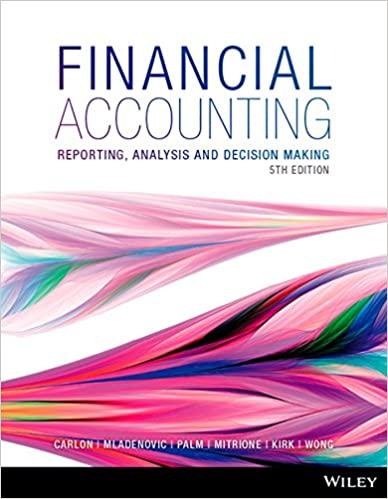Question
In the summer of 2007, Patricia Myers, vice-president of finance at RRK Products, was considering several options related to the restructuring of the firms capital
In the summer of 2007, Patricia Myers, vice-president of finance at RRK Products, was considering several options related to the restructuring of the firms capital structure. These choices represented the first major financial decisions for Patricia since her recent promotion to vice-president. As a result, she was eager to make a good first impression. Patricia suspected that her decisions could have large valuation consequences for RRK and therefore wanted to be sure that her analysis was not only accurate but led to decisions that maximized the value of the firm. RRK had historically been a large, diversified firm that sold food and tobacco products. In the late 1980s, however, the company became the target of a hostile takeover attempt. In response to the takeover attempt, the RRK managers, along with third-party investor Peterson Partners, took the firm private through a leveraged buyout (LBO). As a result of the buyout, the companys debt was increased to over 90% of total capital, and the firms equity was concentrated in the hands of the RRK managers and Peterson Partners. In May of 2005, RRK once again became a publicly traded company by issuing shares in an initial public offering (IPO). The primary purpose of the IPO was to allow Peterson Partners to cash out their equity stake in the firm. In other words, after the IPO, Peterson Partners no longer held any RRK shares. RRK managers, on the other hand, continued to own more than 50% of the firms shares. Some of the proceeds of the offering were also used to reduce the companys long-term borrowings. In late 2006, RRK spun off its food products division, thus making the company now strictly a tobacco products company. The board of directors was concerned, however, that the companys debt ratio remained well above that of its tobacco industry peers. In order to reduce the companys leverage, the board was now considering the sale of $30 million in common equity at a price of $28 per share. The proceeds of this stock issue would be used entirely to reduce the firms long-term debt. Given this backdrop, Patricia Myers was concerned with two related issues. First, she wondered whether the capital structure change would enhance the value of the firm. Second, she wondered how the change would affect the companys cost of capital for new investment projects. To aid her analysis, Myers had assembled various data on RRK and the two other publicly traded, tobacco products companies, Morris Industries and U.S. Tobacco. Exhibits 1 and 2 present RRKs financial statements for the fiscal year ending December 31, 2006. This data has been restated so as to exclude data from the firms spun off food products division. Exhibit 3 presents some benchmark data for RRK and its primary competitors. Unfortunately, because RRK had been a pure-play tobacco company for only a short period of time, Myers was unable to directly estimate a beta for the firm. Exhibit 4 presents current and historical average returns for securities in the market.




You are a financial analyst for a consulting firm that specializes in helping corporations make capital structure decisions. Your firm has been hired by Patricia Myers of RRK Products to help analyze a potential recapitalization. Your boss has asked you to conduct a thorough analysis of the proposed capital structure change and submit a formal proposal containing your findings and a recommendation on how RRK should proceed.
a. The market currently prices RRKs securities under the assumption that the current level of debt is permanent. If the recapitalization is completed, the market will again assume the new level of debt is permanent.
b. The market will not view a stock offering by RRK as a negative signal regarding managements view of the intrinsic value of the firms shares.
c. The current value of the firm incorporates $0.5 million in distress costs, which will decrease to $0 under the proposed recapitalization.
d. RRK measures firm value as the sum of long-term debt and the market value of equity.
e. The firms current beta can be estimated as an average of its competitors betas. When possible, use current rates of return to estimate expected rates of return. Use the S&P 500 and U.S. Treasury Bills as proxies for the market portfolio and risk-free rate, respectively.
The questions (A-D): a. What will be the net impact of the stock issue on the value of the firm? b. What will be the stock price after the completion of the equity issue? c. What will be the new cost of capital for future long-term investment projects? d. Should Myers recommend that RRK proceed with the recapitalization?
Exhibit 1 - Balance Sheet for RRK Products (12/31/06) (\$ millions) Exhibit 2 - 2006 income statement for RRK Products (\$ millions). Exhibit 3 - Selected financial data for RRK Products and tobacco industry peers. Exhibit 4 - Current and historical rates of returnStep by Step Solution
There are 3 Steps involved in it
Step: 1

Get Instant Access to Expert-Tailored Solutions
See step-by-step solutions with expert insights and AI powered tools for academic success
Step: 2

Step: 3

Ace Your Homework with AI
Get the answers you need in no time with our AI-driven, step-by-step assistance
Get Started


